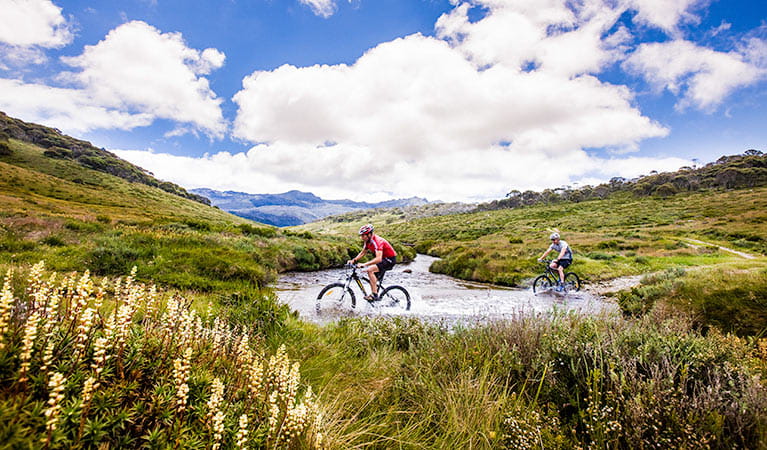Pilot Wilderness mountain bike ride (Alpine Way to Barry Way)
Kosciuszko National Park
Overview
Pilot Wilderness mountain bike ride in Kosciuszko National Park is a challenging, long-distance mountain bike trail that is suited to experienced mountain bike riders.
- Distance
- 53km one-way
- Time suggested
- 9hrs
- Grade
- Hard
- Entry fees
- Park entry fees apply
- Opening times
This trail is open to bike riders and walkers in summer and for cross-country skiing and snowshoeing in winter. Fat bikes permitted year-round.
- What to
bring - Drinking water, hat, snacks, sunscreen, suitable clothing, topographic map, compass
- Please note
- If you're riding a bike, please give way to walkers along this track.
- Fill in the free trip intention form and hire a PLB from the Snowy Region Visitor Centre or Perisher Visitor Office.
- The northern section of this route, between Alpine Way and Tin Mine Huts, can be snowbound during winter months (June-October). Snowdrifts on Bobs Ridge can extend through to December in a big snow year.
Pilot Wilderness mountain bike ride starts from Alpine Way, at the Cascade trail head, and travels through the remote Pilot Wilderness Area to Pinch River campground, on Barry Way.
Along the way, it follows several trails, including Cascade trail, Ingeegoodbee trail and Nine Mile trail. Adrenaline junkies take note – there are sustained steep climbing sections on Bobs Ridge that will test your cardio fitness. The very steep descent on Nine Mile trail will test your riding skills.
If you’re after a moderately difficult route with incredible views, turn around once you reach the crest of Bob's Ridge, or Cascade Hut - a short detour off the main trail. If you plan to tackle the long, challenging ride through to Barry Way, you'll need to be experienced in long-distance riding and pack riding. Bring a map, Personal Locator Beacon (PLB), food and water supplies.
From Cascade Hut, experienced riders can continue past the Tin Mine Huts turnoff. Turn on to Ingeegoodbee trail then on to Nine Mile trail. This steep section, along Nine Mile trail, drops 1000m in 5km, on its way to Pinch River campground, at the junction of the Pinch and Snowy rivers.
The ride travels from the sub-alpine areas of Thredbo Valley through the montane forests of snow gum, mountain gum and alpine ash at the heart of Pilot Wilderness Area. Finally you drop down to the native cypress pine and white box woodlands in Lower Snowy River Valley.
Most people tackle the ride as a one-way trip north to south with a supporting car shuffle, due to the drop in elevation. If you don't organise a car pickup from Barry Way, it's around 61km north (uphill) to Jindabyne or 30km south to Suggan Buggan.
Map
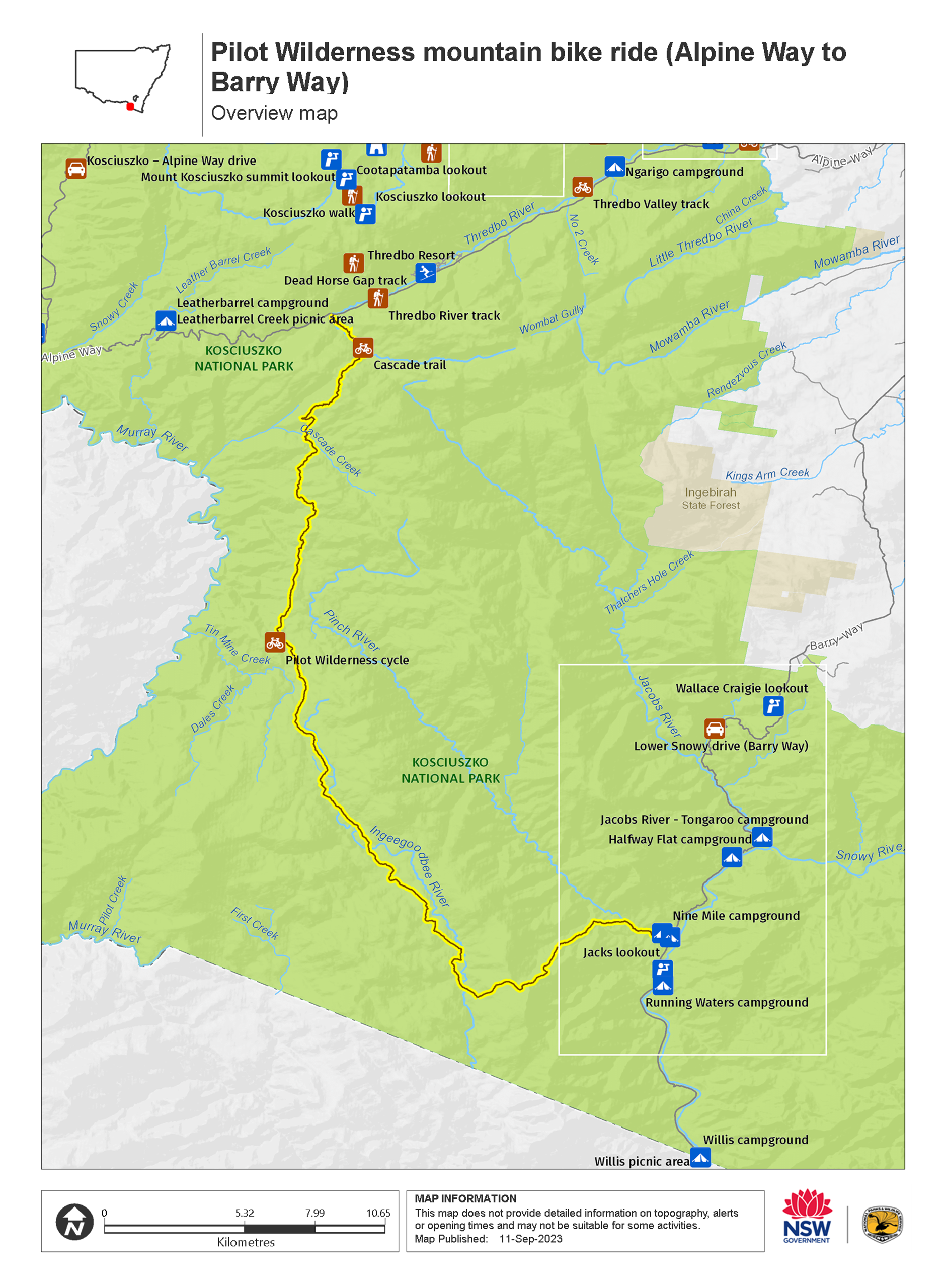
Map
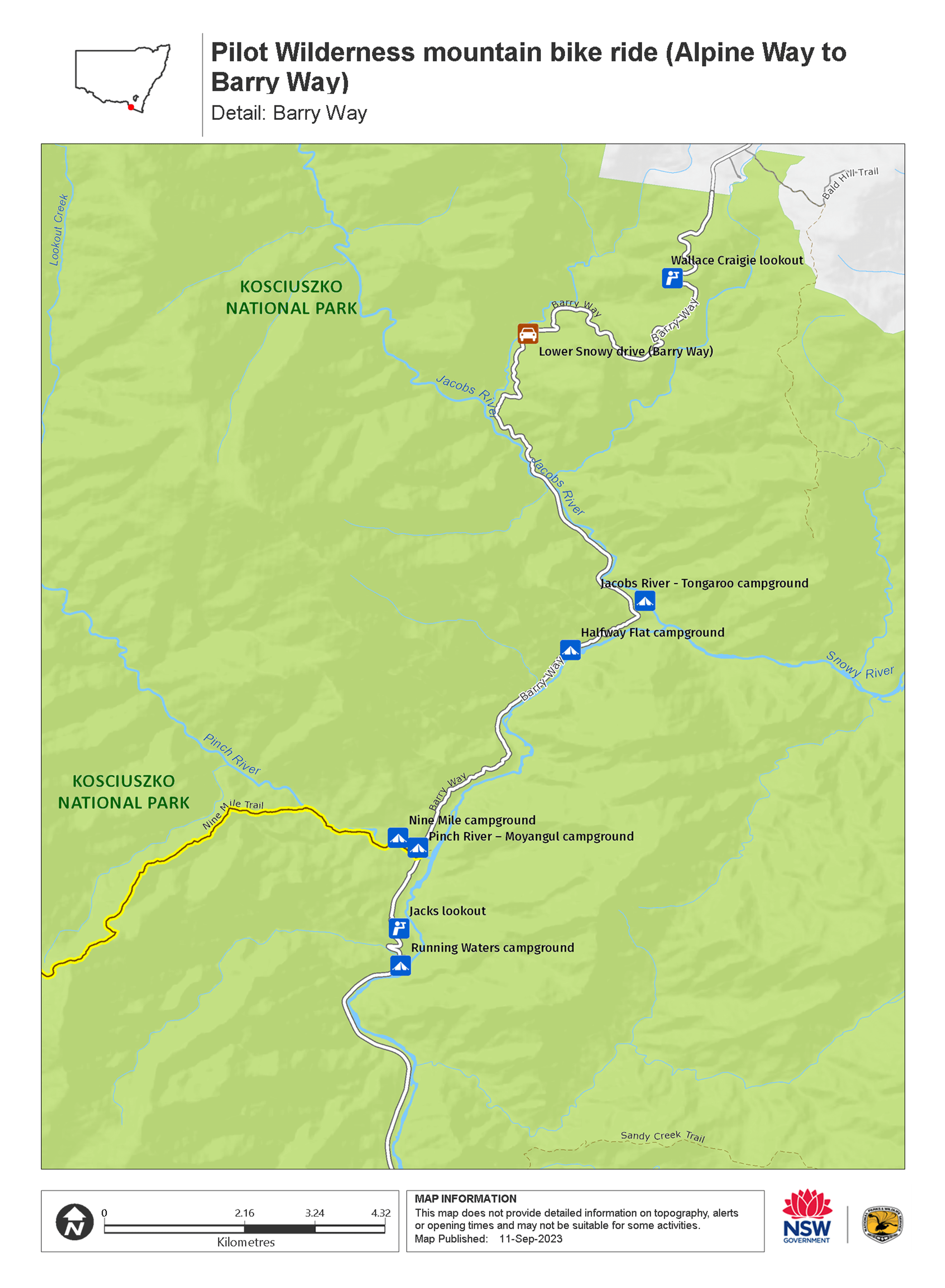
Map legend

Local alerts
For the latest updates on fires, closures and other alerts in this area, see https://www.nationalparks.nsw.gov.au/things-to-do/cycling-trails/pilot-wilderness-mountain-bike-ride-alpine-way-to-barry-way/local-alerts
General enquiries
- National Parks Contact Centre
- 7am to 7pm daily
- 1300 072 757 (13000 PARKS) for the cost of a local call within Australia excluding mobiles
- parks.info@environment.nsw.gov.au
Park info
- in the Lower Snowy River area of Kosciuszko National Park in the Snowy Mountains region
The Lower Snowy River area is open all year, but some roads and trails may close due to weather conditions or park management issues.
-
No park entry fees apply in the Lower Snowy River area. See vehicle entry fees for other areas in Kosciuszko National Park.
Buy annual pass.
- in the Thredbo-Perisher area of Kosciuszko National Park in the Snowy Mountains region
- The Thredbo-Perisher area is open all year, but some roads and trails may close due to weather conditions or park management issues. Kosciuszko Road is closed between Perisher and Charlotte Pass in winter (June to October long weekends).
-
Park entry fees apply on Alpine Way and Kosciuszko Road
Winter (June to October long weekends): $29 per vehicle per day (24hrs from purchase); motorcycles $12; bus passengers $11.45 per adult, $3.60 per child per day. Find out more about the winter entry surcharge.
Rest of Year: $17 per vehicle per day (24hrs); motorcycles $7; bus passengers $6.60 per adult, $2.20 per child per day.
Passes: Day passes, multi-day passes and annual All Parks Pass available from NPWS visitor centres, local agents and operating vehicle entry stations. Single and Multi-Day passes are also available via the Park'nPay app. Short Breaks Pass: $68 for 5 days park entry at price of 4 days (not valid winter).
Read our Annual Pass FAQs for information.
Buy annual pass.
Visitor info
All the practical information you need to know about Pilot Wilderness mountain bike ride (Alpine Way to Barry Way).
Track grading
Features of this track
Distance
53km
Quality of markings
No directional signage
Experience required
Experienced bushwalkers
Gradient
Very steep and difficult
Steps
No steps
Quality of path
Rough track, many obstacles
Getting there and parking
Get driving directions
Pilot Wilderness mountain bike ride is in the southern precinct of Kosciuszko National Park. To get there:
From Snowy Region Visitor Centre:
- Drive 3km along Kosciuszko Road towards Perisher, then turn left at Alpine Way. The trackhead is 36.5km along Alpine Way, 5.5km past the Thredbo Village turn-off.
Road quality
All 2WD vehicles need to carry snow chains in winter, between June and October long weekends, on:
- Kosciuszko Road (to Perisher)
- Guthega Road
- Alpine Way between Thredbo and Tom Groggin
Snow chains are recommended for all vehicles driving in the park, including 4WD and AWD, in the event of extreme weather. Read our snow driving in Kosciuszko tips.
Roads can close in extreme weather, so it’s a good idea to check weather and road conditions before setting out.
Parking
Parking is available nearby to the attraction at the Cascade trailhead on Alpine Way – please note that park use fees apply. Most people arrange a car shuttle or pick up from Pinch River campground on Barry Way, 60km from Jindabyne on a dirt road.
Maps and downloads
Permitted
- Fat bikes, or snow bikes, are permitted year-round on Pilot Wilderness mountain bike ride.
- Walking is not recommended in winter as this trail can become snowbound.
- You can cross-country ski or snowshoe this trail in winter.
- Cycling is permitted in the Pilot Wilderness Area only on Cascade trail, Ingeegoodbee trail, and Nine Mile trail.
Prohibited
Drones
Flying a drone for recreational purposes is prohibited in this area. Drones may affect public enjoyment, safety and privacy, interfere with park operations, or pose a threat to wildlife. See the Drones in Parks policy.
This area may be a declared Drone Exclusion Zone, or may be subject to Civil Aviation Safety Authority (CASA) rules for flying near airports, aerodromes and helicopter landing sites. See CASA's Drone Flyer Rules.
Commercial filming and photography
Commercial filming or photography is prohibited without prior consent. You must apply for permission and contact the local office.
Pets
Pets and domestic animals (other than certified assistance animals) are not permitted. Find out which regional parks allow dog walking and see the pets in parks policy for more information.
Smoking
NSW national parks are no smoking areas. The alpine resorts of Thredbo, Perisher, Charlotte Pass, Selwyn, Ski Rider and Kosciuszko Tourist Park are exempt, though some commercial and outdoor places within these resorts may have no smoking areas.
Visitor centre
-
Snowy Region Visitor Centre
49 Kosciuszko Road, Jindabyne NSW 2627 - 8.30am to 5pm daily. Closed Christmas Day.
- 02 6450 5600
Learn more
Pilot Wilderness mountain bike ride (Alpine Way to Barry Way) is in Lower Snowy River area. Here are just some of the reasons why this park is special:
A sanctuary for wildlife
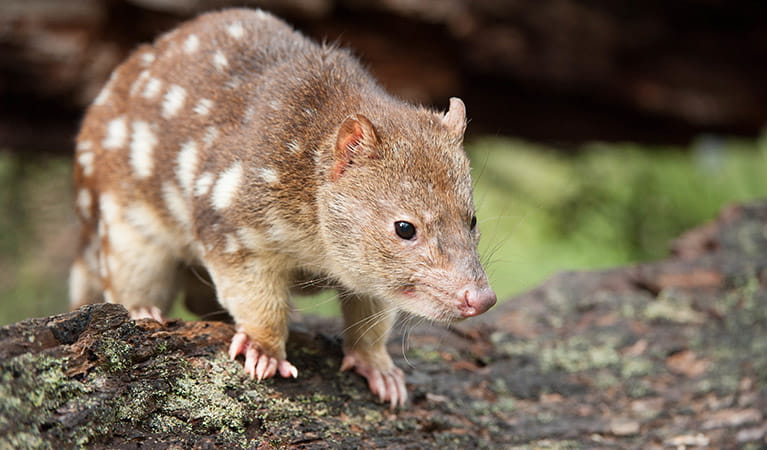
The Lower Snowy River is a haven for plants and animals, including rare species. While kangaroos, swamp wallabies and wombats are common, keep an eye out for the endangered spotted-tailed quoll, shy platypus, short-beaked echidna, and impressive wedge-tailed eagles. White box and cypress pine are common in the dry woodlands, as are grass trees - ancient flowering plants that have existed since dinosaurs roamed Australia.
Drive the old drovers route
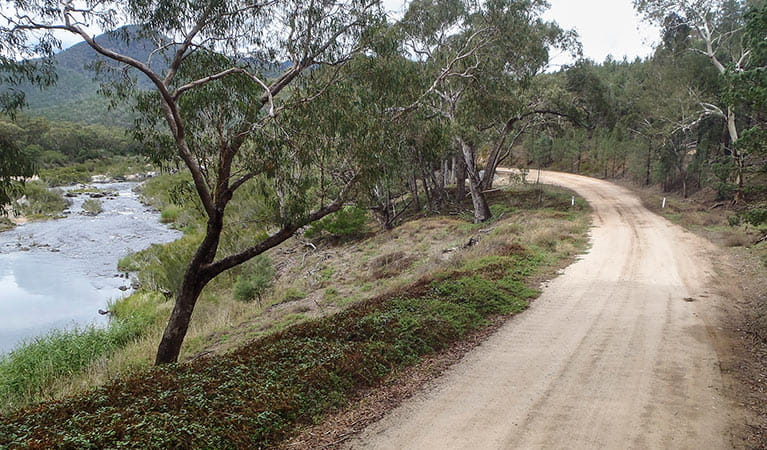
In the 1800s, Lower Snowy drive (Barry Way) formed the stock route for sheep and cattle travelling from summer grazing, in the high alpine country, to Bairnsdale markets. The eagle-eyed can spot tree markers and the remains of old stockyards near Jacobs River campground. Before federation, a customs house stood at Willis picnic area, for the Victorian Government to collect taxes on cattle crossing the border.
- Lower Snowy drive (Barry Way) Lower Snowy drive is a sprawling road trip that takes travellers past picnic spots, swimming holes, campgrounds and lookouts in the Snowy River valley.
World-class wilderness
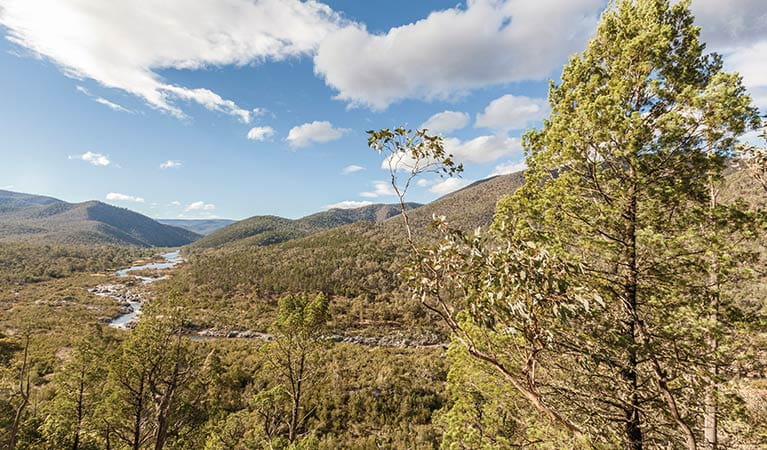
In recognition of Kosciuszko's unique value as a conservation area, it’s been named a UNESCO Biosphere Reserve. More than half of the park, over 350,000ha (almost 865,000 acres), has been declared wilderness, including Pilot Wilderness and Byadbo Wilderness in the Lower Snowy River area. Pilot Wilderness, which rises from just over 200m in the Lower Snowy River valley to 1830m at The Pilot mountain, makes up over 20 per cent of this protected area.
- Pilot Wilderness mountain bike ride (Alpine Way to Barry Way) Pilot Wilderness mountain bike ride in Kosciuszko National Park is a challenging, long-distance mountain bike trail that is suited to experienced mountain bike riders.
- Snowy River wilderness experience Paddle the iconic Snowy River on a 5-day adventure in remote Kosciuszko National Park. Camp in Byadbo Wilderness with your Aboriginal guide on this unforgettable experience.
Plants and animals protected in this park
Animals
-
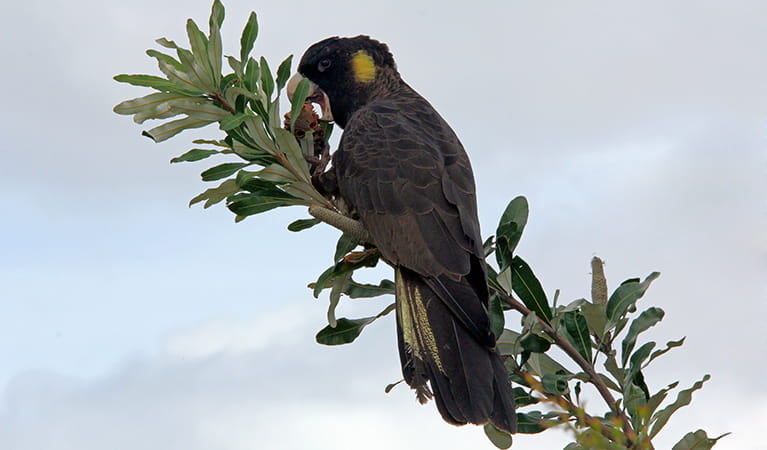
Yellow-tailed black cockatoo (Calyptorhynchus funereus)
The yellow-tailed black cockatoo is one of the largest species of parrot. With dusty-black plumage, they have a yellow tail and cheek patch. They’re easily spotted while bird watching, as they feed on seeds in native forests and pine plantations.
-
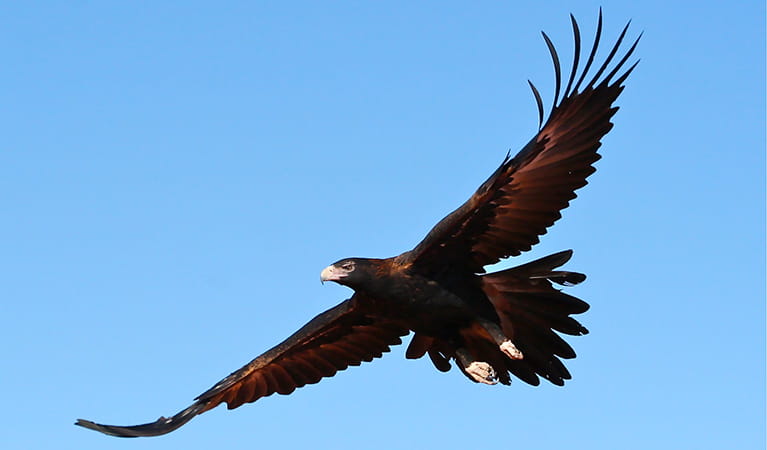
Wedge-tailed eagle (Aquila audax)
With a wingspan of up to 2.5m, the wedge-tailed eagle is Australia’s largest bird of prey. These Australian animals are found in woodlands across NSW, and have the ability to soar to heights of over 2km. If you’re bird watching, look out for the distinctive diamond-shaped tail of the eagle.
-
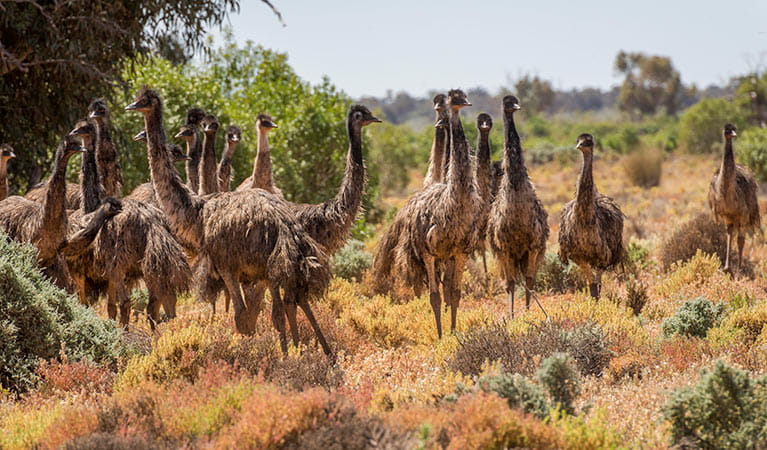
Emu (Dromaius novaehollandiae)
The largest of Australian birds, the emu stands up to 2m high and is the second largest bird in the world, after the ostrich. Emus live in pairs or family groups. The male emu incubates and rears the young, which will stay with the adult emus for up to 2 years.
-

Swamp wallaby (Wallabia bicolor)
The swamp wallaby, also known as the black wallaby or black pademelon, lives in the dense understorey of rainforests, woodlands and dry sclerophyll forest along eastern Australia. This unique Australian macropod has a dark black-grey coat with a distinctive light-coloured cheek stripe.
-
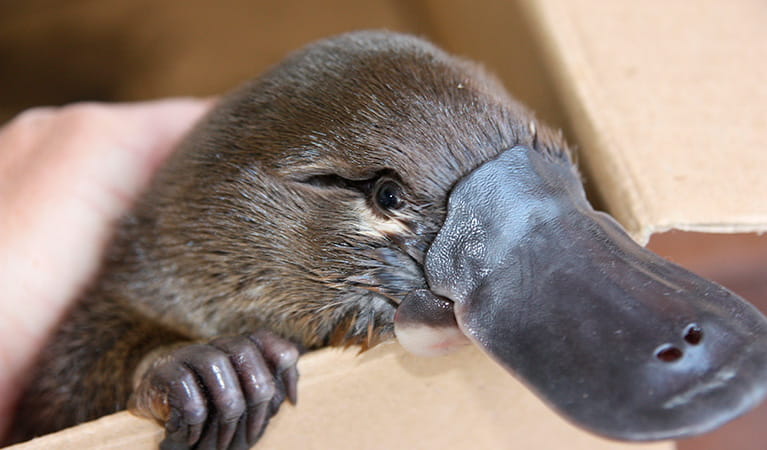
Platypus (Ornithorhynchus anatinus)
One of the most fascinating and unusual Australian animals, the duck-billed platypus, along with the echidna, are the only known monotremes, or egg-laying mammals, in existence. The platypus is generally found in permanent river systems and lakes in southern and eastern NSW and east and west of the Great Dividing Range.
-
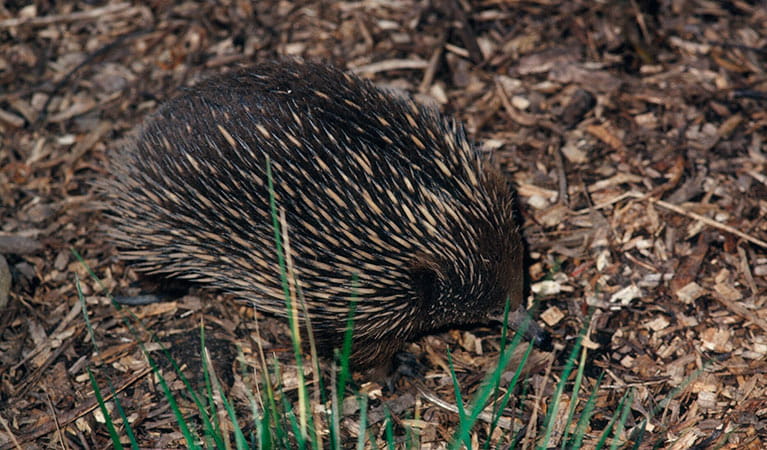
Short-beaked echidna (Tachyglossus aculeatus)
One of only 2 egg-laying mammals in the world, the short-beaked echidna is one of the most widespread of Australian native animals. Covered in spines, or quills, they’re equipped with a keen sense of smell and a tube-like snout which they use to break apart termite mounds in search of ants.
-
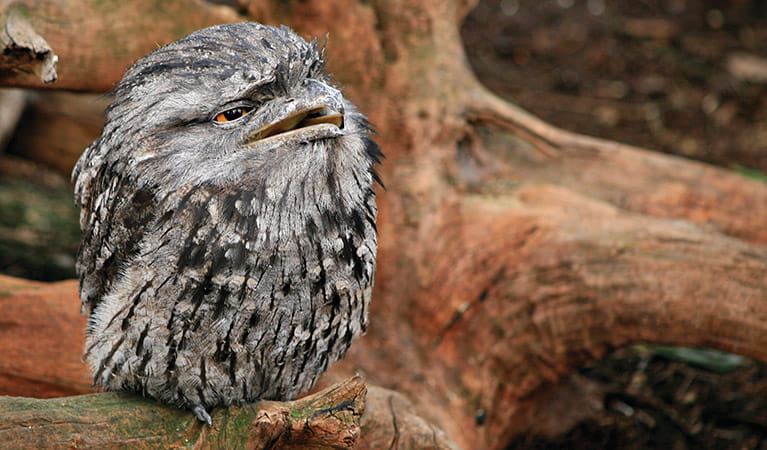
Tawny frogmouth (Podargus strigoides)
Found throughout Australia, the tawny frogmouth is often mistaken for an owl due to its wide, powerful beak, large head and nocturnal hunting habits. The ‘oom oom oom’ call of this native bird can be heard echoing throughout a range of habitats including heath, woodlands and urban areas.
-
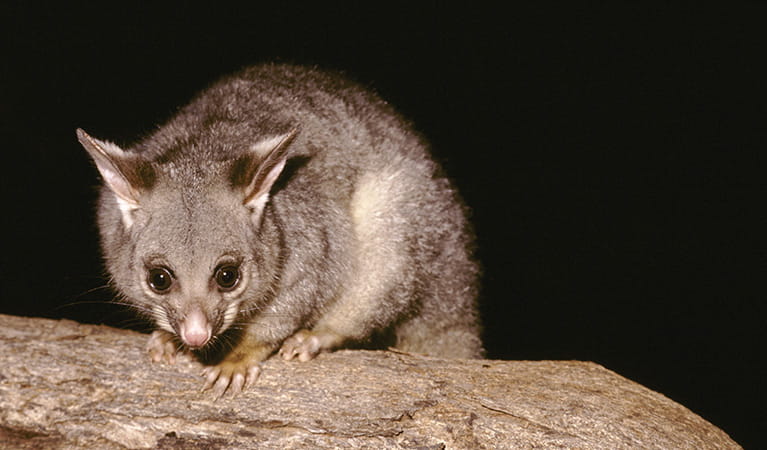
Common brushtail possum (Trichosurus vulpecula)
One of the most widespread of Australian tree-dwelling marsupials, the common brushtail possum is found across most of NSW in woodlands, rainforests and urban areas. With strong claws, a prehensile tail and opposable digits, these native Australian animals are well-adapted for life amongst the trees.
-

Bare-nosed wombat (Vombatus ursinus)
A large, squat marsupial, the Australian bare-nosed wombat is a burrowing mammal found in coastal forests and mountain ranges across NSW and Victoria. The only other remaining species of wombat in NSW, the endangered southern hairy-nosed wombat, was considered extinct until relatively recently.
-

Superb lyrebird (Menura novaehollandiae)
With a complex mimicking call and an elaborate courtship dance to match, the superb lyrebird is one of the most spectacular Australian animals. A bird watching must-see, the superb lyrebird can be found in rainforests and wet woodlands across eastern NSW and Victoria.
-
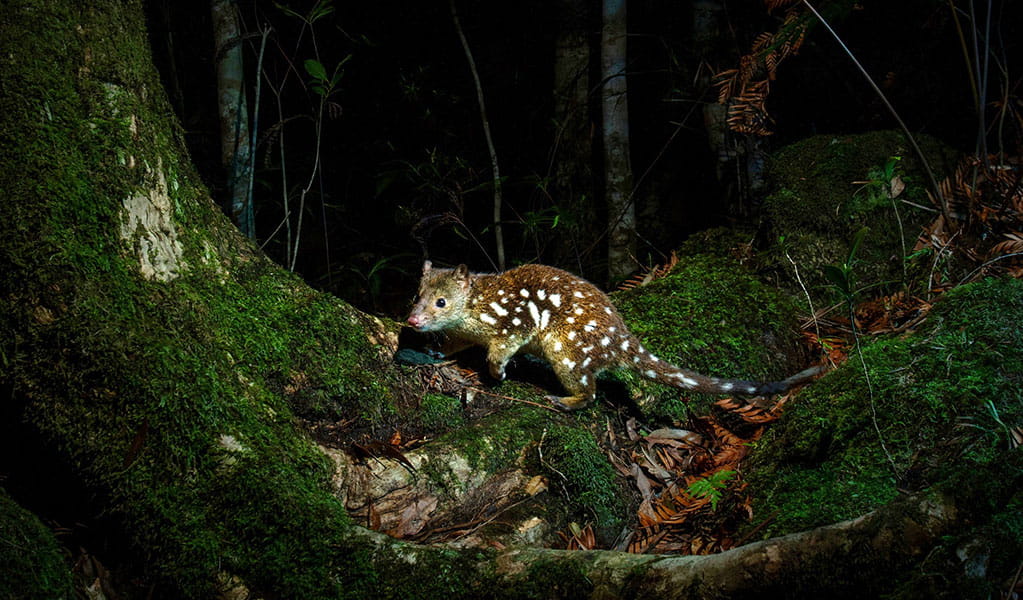
Spotted-tailed quoll (Dasyurus maculatus)
The spotted-tailed quoll is the largest remaining carnivorous marsupial on the Australian mainland. It’s protected as a vulnerable species in NSW.
Plants
-

Grass tree (Xanthorrea spp.)
An iconic part of the Australian landscape, the grass tree is widespread across eastern NSW. These Australian native plants have a thick fire-blackened trunk and long spiked leaves. They are found in heath and open forests across eastern NSW. The grass tree grows 1-5m in height and produces striking white-flowered spikes which grow up to 1m long.
-
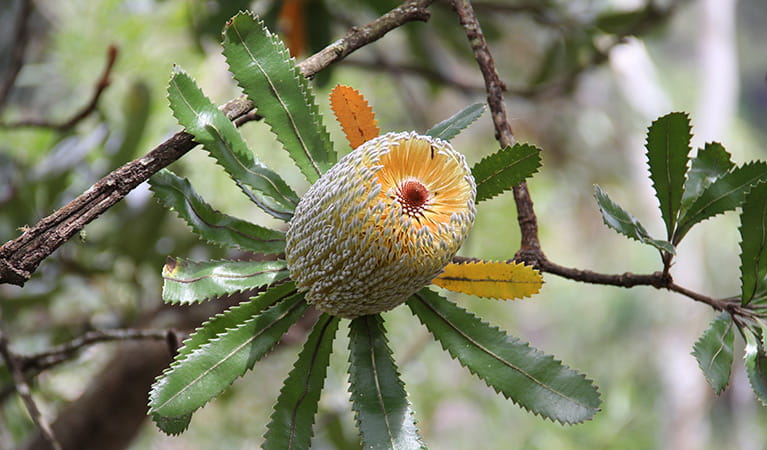
Old man banksia (Banksia serrata)
Hardy Australian native plants, old man banksias can be found along the coast, and in the dry sclerophyll forests and sandstone mountain ranges of NSW. With roughened bark and gnarled limbs, they produce a distinctive cylindrical yellow-green banksia flower which blossoms from summer to early autumn.
-
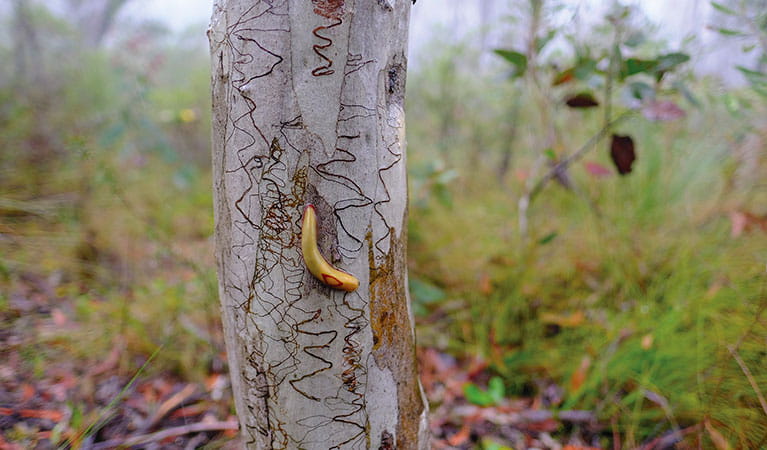
Scribbly gum (Eucalyptus haemastoma)
Easily identifiable Australian native plants, scribbly gum trees are found throughout NSW coastal plains and hills in the Sydney region. The most distinctive features of this eucalypt are the ‘scribbles’ made by moth larva as it tunnels between the layers of bark.

